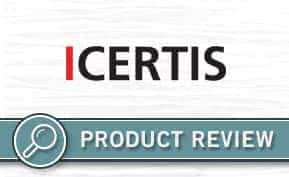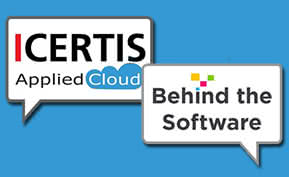Cloud CRM
Contract Management
3 Reasons to Separate Contract Management From Your CRM

Companies that drop tens of millions of dollars on an enterprise solution often attempt to stretch that system’s capabilities to make every dollar count. While a common process, companies need to put this practice to bed.
Leveraging functionalities that are beyond a system’s scope is like trying to put a square peg in a round hole. Although the peg will never fit, many companies attempt to push their systems far beyond their originally intended scope in an effort to wring out every last bit of potential savings.
While a valid thought, extending a system beyond its capabilities can end up costing a company far more down the road, especially with CRM systems.
The scope of CRM
It feels like CRM systems are slowly starting to take over the world. In fact, Salesforce.com, one of the best-known CRM vendors in the world, was recently ranked as the World’s Most Innovative Company of 2013 by Forbes.
Innovation, however, often doesn’t provide a direct correlation to every technological need. CRM systems are specifically designed for managing customer relationships, and that’s where the line should be drawn.
If your company attempts to use Salesforce (or any CRM system) to automate and streamline contract lifecycle management (CLM), you’ve gone too far. From a contracting perspective, companies should only use their CRM system for three things: to search for contracts, to request contracts and to track contracts.
Why CRM falls short
CRM systems shouldn’t be expected to manage authoring, rendering, redlining and approving, all of which are critical components of a proper CLM solution. Contracts are the foundation of any business relationship and the source of numerous revenue channels.
If a company wants to successfully manage its contracts, it needs to adapt a full-fledged CLM solution, not just stretch Salesforce.com past its capabilities.
The importance of pairing CRM with a contract management solution
Proper CLM is best performed in a focused CLM system. Here are three reasons why:
- Functionality: Salesforce.com is the clear leader in customer relationship management, but CRM solutions lack the tools needed for effective contract management. CLM solutions offer contract rendering, authoring, reviewing, redlining, approving, storing and securing, functionalities missing from CRM.
These steps require contract expertise, and must be completely auditable and secure. Organizations that bog down their CRM solutions with other functions like the ones listed above often see a decreased performance in their core CRM capabilities (the reason for the purchase in the first place). - Scalability: As businesses grow, so do their contract volumes. Systems unprepared to handle large quantities of documents fail to scale when an organization needs it most, causing internal backup and system failures. The best contract management systems are built to handle quick growth and sudden increases in contracts.
- Licenses: The number of people needed to move a contract from initiation through approval can end up being much larger than originally anticipated. Sales, marketing, administration, contracting, legal, finance, channel management and procurement each have their own role in the contracting process.
Now think about how many of these departments currently have access to your current CRM system. The number of licenses required might need to double, triple, or more to ensure all the right people have access. And that’s not practical or cheap.
But it’s possible to have it all — a dedicated CLM system can provide what CRM solutions lack. Companies can still use their CRM system for contract initiation and monitoring, but by implementing a singular CLM system that easily integrates with your existing solution, they no longer have to fear the headaches that come with asking systems to work outside of their comfort zones.
Stretching solutions in search of maximum ROI could end up costing a company more in the end. Instead, companies must accept each system for its strengths, and then implement a specialized solution to handle the weaknesses. In some cases two solutions are better than one.






